The 5-Ingredient College Cookbook: Easy, Delicious, and Healthy Recipes for the Hungry Student  Copyright 2019 Kathy Davidson. All rights reserved. This document is geared towards providing exact and reliable information in regards to the topic and issue covered. The publication is sold with the idea that the publisher is not required to render accounting, officially permitted, or otherwise, qualified services. If advice is necessary, legal or professional, a practiced individual in the profession should be ordered. - From a Declaration of Principles which was accepted and approved equally by a Committee of the American Bar Association and a Committee of Publishers and Associations.
Copyright 2019 Kathy Davidson. All rights reserved. This document is geared towards providing exact and reliable information in regards to the topic and issue covered. The publication is sold with the idea that the publisher is not required to render accounting, officially permitted, or otherwise, qualified services. If advice is necessary, legal or professional, a practiced individual in the profession should be ordered. - From a Declaration of Principles which was accepted and approved equally by a Committee of the American Bar Association and a Committee of Publishers and Associations.
In no way is it legal to reproduce, duplicate, or transmit any part of this document in either electronic means or in printed format. Recording of this publication is strictly prohibited and any storage of this document is not allowed unless with written permission from the publisher. All rights reserved. The information provided herein is stated to be truthful and consistent, in that any liability, in terms of inattention or otherwise, by any usage or abuse of any policies, processes, or directions contained within is the solitary and utter responsibility of the recipient reader. Under no circumstances will any legal responsibility or blame be held against the publisher for any reparation, damages, or monetary loss due to the information herein, either directly or indirectly. Respective authors own all copyrights not held by the publisher.
The information herein is offered for informational purposes solely, and is universal as so. The presentation of the information is without contract or any type of guarantee assurance. The trademarks that are used are without any consent, and the publication of the trademark is without permission or backing by the trademark owner. All trademarks and brands within this book are for clarifying purposes only and are the owned by the owners themselves, not affiliated with this document. Table of Contents

Introduction

College can be expensive, not only because of tuition, but because youre on your own and trying to figure out a food budget, maybe for the first time. You are also probably working with a small kitchen, so storing a bunch of food isnt convenient.
In the opening chapters, youll see what goes into cooking in college and what kind of equipment/food items youll need. After learning about meal-planning, budgeting, food storage, and safety, well get into the recipes. The recipes only use five ingredients. I dont count water, salt, and pepper among the five, because other 5-ingredient cookbooks dont, and they are so essential to basic flavor and cooking. If I counted them in the five ingredients, there wouldnt be room for other spices or ingredients that make each dish unique. That being said, many of these recipes are truly just five ingredients, even with salt and/or pepper.
Ive tried to structure the ingredient lists in a way thats understandable. The recipe sections are divided into: Breakfast Salads + Sandwiches Poultry Beef + Pork Seafood Soups + Stews Vegan Snacks Drinks Desserts At the very end of the book, Ive included some useful conversion charts you can keep referring to as you cook. Whether youre a home cook just starting out or confident you know your way around a kitchen, these are fast, (usually) healthy, and versatile recipes.

Chapter 1: Basic Cooking Terms and Skills

Before we get into the nitty-gritty of college cooking, lets review the essentials. If youre brand-new to cooking, however, what are the basic terms and skills you need to know? In this chapter, well run down the most important cooking/prepping terms youll come across in recipes, as well as the must-know knife cuts.
Good-to-know cooking terms
Throughout the recipes in this book (and every other cookbook you might come across), there will be certain terms used to describe prepping and cooking steps.
Heres a list of the most common: Al dente This Italian phrase refers to the texture of pasta. It literally translates into to the tooth, meaning your pasta still has a little bite to it, so it isnt soft and mushy. On the back of pasta boxes, there will usually be a suggested time for al dente noodles. Bake You bake food in the oven, so it gets cooked using a dry heat. When baking something like a casserole or meat, the recipe might ask that you cover it with foil or a lid. Baste When youre cooking meat, usually roasting or grilling, the top can get dried up.
This is when youll baste, which means brushing the top of the meat with a sauce or marinade during the cooking process. Beat This is a pretty self-explanatory term, and usually refers to eggs. When youre asked to beat them, it just means whisking them with a whisk or fork until the yolks and whites are blended together. Depending on the recipe, you might beat yolks or whites separately. Blanch Blanching is when you cook vegetables (and sometimes fruit) very quickly in hot water, keeping them submerged for just a minute or so, and then dunking them in ice water to stop the cooking process. If youre freezing fresh vegetables, youll often blanch them first.
Boil This refers to the temperature of a liquid. You can eyeball it. A rolling boil is a very strong boil, with steam rising, while just boiling means the water is just starting to consistently bubble. Braising Braising is done using wet and dry heat. First, the food gets sauted at a high temperature (thats the dry heat), and then put into a pot with some liquid. This pot is covered, and the food finishes cooking at a lower temperature.
Its a slow-cooking technique. Caramelize Caramelizing a food (like onions) means cooking them until they become brown, but not burned. The browning occurs when the carbs and sugar in a food get heated to 300-degrees or higher. Chop You know what chopping means - its just cutting stuff - so you really just want to look at the word that comes after or before it. Youll be asked to finely or roughly chop stuff like vegetables and fruit. Theres a little more to know about chopping, but well get into that when we talk about knife skills shortly.
Cream This term is used a lot in baking, and refers to how you mix butter and sugar together. You know theyre combined properly when the mixture is light and fluffy. Cut in When you come across this term, it means to incorporate solid butter into flour, until you get a texture like coarse sand, with little pieces of butter. Its often done with forks, two knives, a pastry cutter, or even your hands. Deglaze In recipes, you might be asked to deglaze a pan. This means adding a liquid of some kind, like broth or wine, so the stuck-on bits of food dissolve into the liquid.
Often times, youll make a sauce from this delicious mixture. Dice When youre asked to dice something, imagine what dice look like. The recipe wants you to chop the food into small, even cubes. Egg wash An egg wash is when you mix beaten eggs and water or milk. This is then brushed on top of baked goods like pies or pastries, so when baked, theres a shiny glaze on top. Emulsify Youll see this word a lot in recipes for homemade salad dressings.

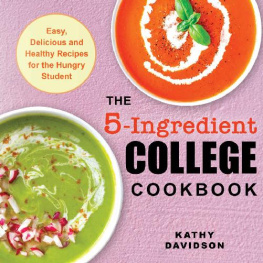
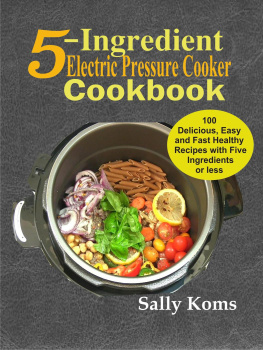

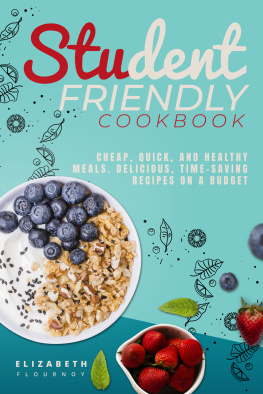


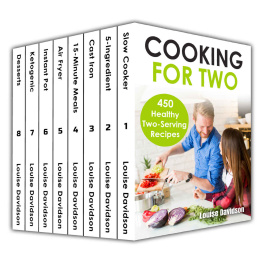
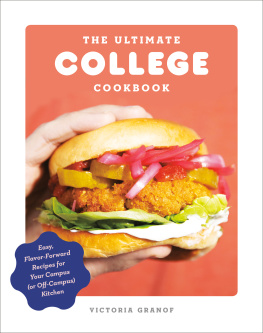

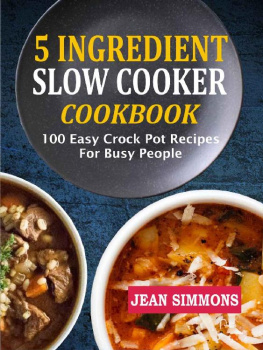
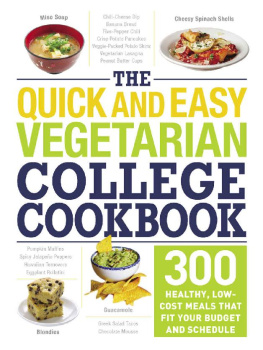
 Copyright 2019 Kathy Davidson. All rights reserved. This document is geared towards providing exact and reliable information in regards to the topic and issue covered. The publication is sold with the idea that the publisher is not required to render accounting, officially permitted, or otherwise, qualified services. If advice is necessary, legal or professional, a practiced individual in the profession should be ordered. - From a Declaration of Principles which was accepted and approved equally by a Committee of the American Bar Association and a Committee of Publishers and Associations.
Copyright 2019 Kathy Davidson. All rights reserved. This document is geared towards providing exact and reliable information in regards to the topic and issue covered. The publication is sold with the idea that the publisher is not required to render accounting, officially permitted, or otherwise, qualified services. If advice is necessary, legal or professional, a practiced individual in the profession should be ordered. - From a Declaration of Principles which was accepted and approved equally by a Committee of the American Bar Association and a Committee of Publishers and Associations.
 College can be expensive, not only because of tuition, but because youre on your own and trying to figure out a food budget, maybe for the first time. You are also probably working with a small kitchen, so storing a bunch of food isnt convenient.
College can be expensive, not only because of tuition, but because youre on your own and trying to figure out a food budget, maybe for the first time. You are also probably working with a small kitchen, so storing a bunch of food isnt convenient.  Before we get into the nitty-gritty of college cooking, lets review the essentials. If youre brand-new to cooking, however, what are the basic terms and skills you need to know? In this chapter, well run down the most important cooking/prepping terms youll come across in recipes, as well as the must-know knife cuts.
Before we get into the nitty-gritty of college cooking, lets review the essentials. If youre brand-new to cooking, however, what are the basic terms and skills you need to know? In this chapter, well run down the most important cooking/prepping terms youll come across in recipes, as well as the must-know knife cuts.